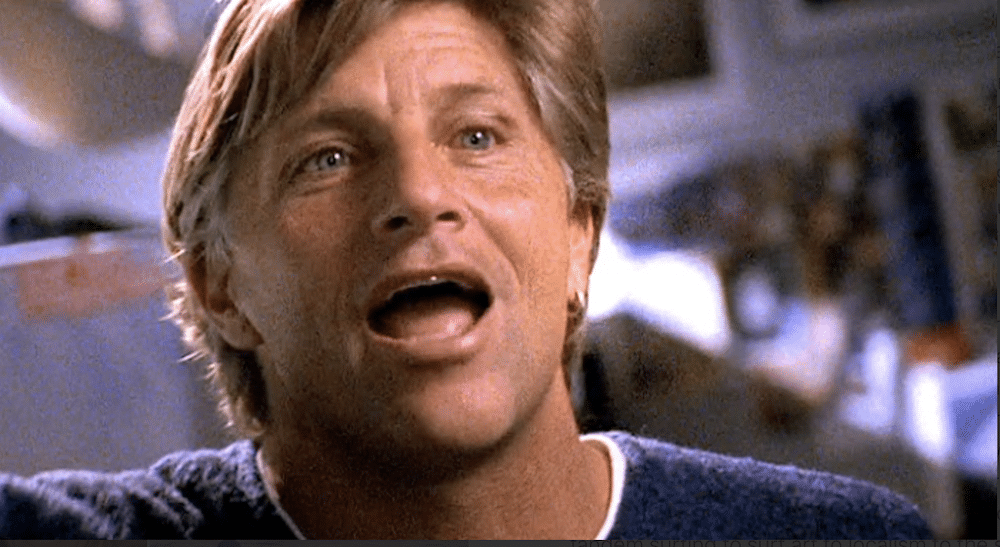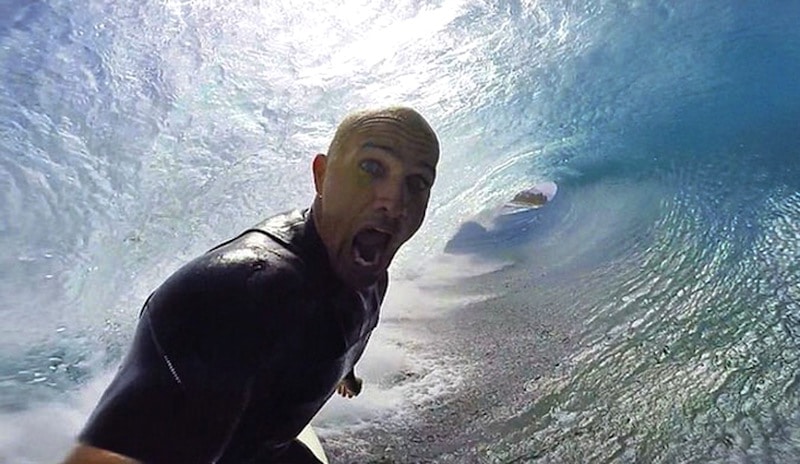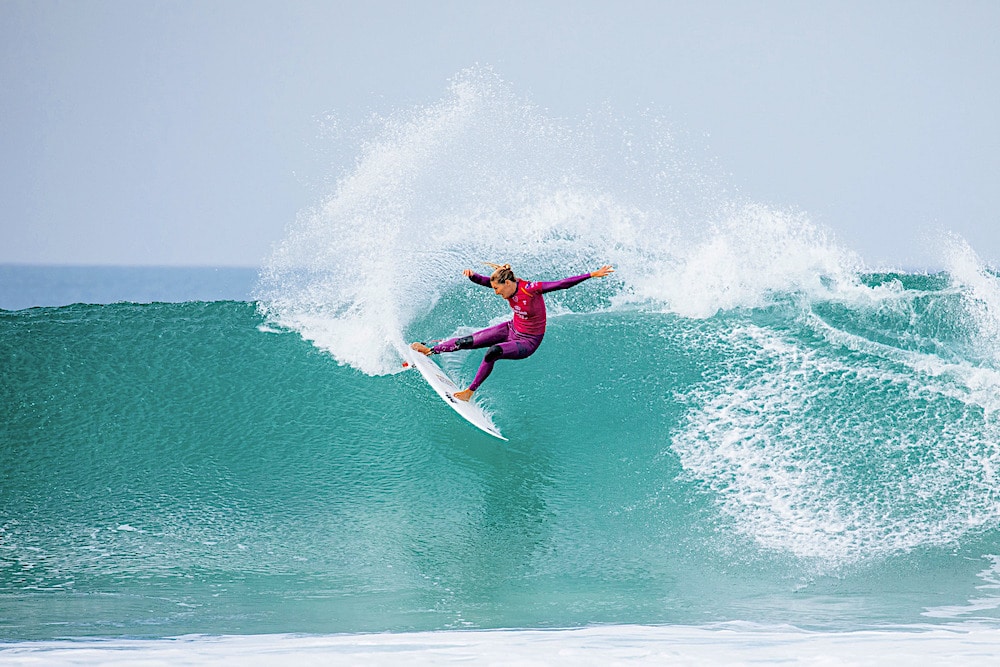So here's a little advice for Joe, Pottz, Ron, Barton, Peter and Rosy…
Being one of the few, apparently, who’ve been staying up late (on the West Coast, at least) to check in on the 2019 Corona Open J-Bay I was again struck by sharply contrasting elements of the WSL broadcast: the quality of the coverage, especially the replays, and the inanity of the commentary.
Yeah, I know, listening to Joe Turpel recite love letters to the Top 40 live on air, heat after heat after heat, makes me want to stuff a wad of Fu in my ears, too.
But in regards to the commentary, and considering the tone of BeachGrit’s more typical criticism of the hapless World Surf League, which generally runs towards clever, I was moved to provide a more informed critique for those of its fan base who, along with the ‘tit clicks’ and sarcastic Chas Smith musings, might enjoy some actual perspective with their daily dose of snark.
And I’m just the guy to provide it, seeing as how, along with my brother Matt, I did the first, blow-by-blow (or more appropriately wave-by-wave) live commentary at a professional surf contest, way back at the 1984 Stubbies Pro held at Oceanside.
Up until that time surf contest commentary was rarely elevated beyond, “Cheyne Horan, please return your jersey to the beach marshal. Cheyne, return your jersey” and “Red’s up and riding”, even when red happened to be four-time world champion Mark Richards.
Oh sure, during the very first Stubbies Pro, held at Burleigh Heads in 1977, contest organizer and erstwhile drama student Peter Drouyn (what, you thought that Westerly Windina act was something new?) called a few of the latter heats with a spot-on impersonation of a Melbourne Cup horse race announcer. Good for a few laughs, but by the next year “Bloody Bill” Bolman, who took the helm at the Stubbies event, was using the amplified voice to urge spunky Gold Coast sheilas to show us their tits, while at the Rip Curl Bells event booth guest Terry Fitzgerald was using the mic to call sets for rookie team riders like Steve Wilson and Derek Hynd, sublimely unconcerned that everyone on the bluffs could hear exactly what he was doing.
Amusing, yes, informative, no.
Surf commentary got no more sophisticated as the pro tour progressed into the 1980s, which is why, in an attempt to justify a tenuous sponsorship arrangement, my brother Matt and I convinced the Stubbies execs to let us do actual live commentary at their ’84 event, leaving the jersey assignments to the beach marshals and the “show us your tits” stuff to the pros in their sponsor’s tents.
This we did, from the first heat to the last, and continued to so do for several years after, wielding the mic at a variety of big time events, from the Op Pro at Huntington Beach (where I first coined the term “paddle battle”, thank you) to the Gotcha Pro in Hawaii (including commentating the ancillary bikini contest and subsequent near riot) and the Spur Steak Ranch Surfabout in Capetown, South Africa (where I was actually paid in Spur Burgers with monkey gland sauce.)
In every case, focusing on providing surf fans with perspective on what they were watching, not simply describing what they were seeing. Which, when you get right down to it, is the entire point of sport’s commentary.
Did I eventually get tired of hearing my own voice, yammering away at the efficacy of the Huntington Hop (I actually stole that one from Tom Curren, but made it my own through relentless repetition) and explaining the priority rule for the umpteenth time? Naturally, and I’m sure many others did, as well. I’ll certainly cop to that. But having pretty much invented the art form I can claim with confidence that when it comes to live surf contest commentary, I know what I’m talking about. So here’s some advice, from a world-weary gray beard, so to speak, to our new breed of mic jockeys.
JOE: You have the job, mate. Had it for years. No need to suck up to the powers that be by continually extoling the virtues of the tour and its participants. Some actual critique would be nice, too, as in stop describing awkward tail-drifts as carving turns and blown finishes as timely exits. And while you’re at it, there’s no need to gush over every single competitor like you’re hoping they’ll hear you and invite you to their latest clip launch party. You’ve got one of the coolest jobs in pro surfing. Invite them to your party.
MARTIN: It’s simple. If you’re going to be a commentator you can’t come at it from the perspective of some dude in the stands, downing his boerewors with a Castle Lager and cheering for every good ride. Cut out the oohing and aahing. Your job isn’t to convince us that these guys and gals are good surfers — that’s their job. And c’mon, Pottz, you know good surfing when you see it. You invented a lot of it. When they kook out, call it out. You were world champ, for fucks sake. Your legacy is safe.
RONNIE: Though you’re too young to have attended the 1977 Stubbies, you’ve obviously picked a page from the Drouyn playbook, delivering the blow-by-blow in a breathless, hyperbolic rush. Which is great at offsetting Turpel’s sleep-inducing monotone and Pott’s frequent fanboy inarticulation. But you might consider taking it down a few notches, just now and then, to let us hear what you’re seeing, not simply telling us what we’re watching. You’ve got the cred. Use it.
BARTON: The most fun to listen to, as well as the most informative in terms of technique and strategy. But as the second world champ on the commentary team you’ve earned the right to be openly critical and well as appropriately supportive of today’s pros with a little less bemusement, a bit less suppressed chuckling, at the current crop’s travails. They’re serious out there. You were, too. Let your commentary reflect that.
PETER: I’ll just say this: Try not to sound so surprised that someone’s asking your opinion, and being so apologetic when it’s unflattering. You’re the biggest badass on the team. On the whole tour, for that matter. Act like it.
ROSY HODGE: Don’t change a thing. You’re absolutely adorable.







